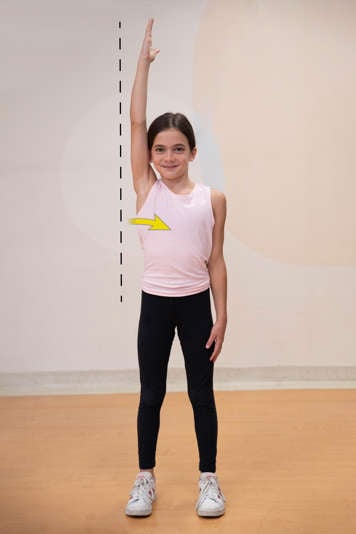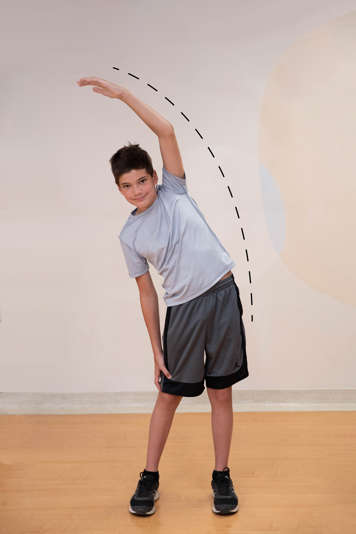Before having heart surgery, your child will be given some exercises to prepare them for the surgery. Your child will also need to do exercises after surgery to help them recover.
Your child will need to exercise after heart surgery
After heart surgery, your child will need to do exercises to help keep their lungs well expanded and free of mucus. This will help your child get better so they can go home sooner. These exercises are:
- deep breathing
- splinted coughing
- moving (e.g., sitting up, walking)
You and your child will learn how to do deep breathing before the operation
Before the operation, a physiotherapist may meet with you and your child. A physiotherapist is a health-care professional who is trained to prevent, identify, and correct movement problems. The physiotherapist will teach your child how to practice deep breathing:
- Young children will practice deep breathing by blowing bubbles.
- Older children will practice deep breathing using a device called an incentive spirometer.
The physiotherapist or clinic nurse will give you bubbles or an incentive spirometer to take home so your child can practice before their surgery.
Please bring these back to the hospital on the day of the operation. Your child will need them after surgery.
Your child should start doing the exercises as soon as possible while in hospital
After surgery, once your child is awake and breathing on their own and you are with your child, it is important to start doing the exercises. If you have trouble, your nurse may be able to help you.
Your nurse will also support you in helping your child to start moving. First your child will sit at the edge of the bed. Later, they will progress to taking short walks. Please encourage your child to move as well.
| Activity | How long and how often | Instructions |
|---|---|---|
| Bubbles (for young children) | 2 to 3 minutes every hour (while awake) during hospital stay | Take a deep breath in and blow the bubbles out slowly. Popping the bubbles with their hands can also help your child move their arms which will help them take deeper breaths. |
| Incentive spirometer (for older children) | 10 breaths every hour (while awake) during hospital stay | Sit up tall and hold the incentive spirometer in an upright position. Place the mouthpiece in the mouth with lips tightly closed. Slowly and steadily take in a deep breath. Keep the head and shoulders still. Depending on the incentive spirometer, either:
Breathe out slowly and repeat. Gradually get your child to work harder, as much as they can manage. Depending on the type of incentive spirometer, your child should either:
|
| Splinted cough | Every hour after bubbles or incentive spirometer 2 to 3 times every hour if your child's cough is congested | Cross arms across the chest, while hugging a pillow or stuffed toy. Take a deep breath and cough 2 or 3 times to clear any mucus while holding the hug to support their chest. |
| Moving around | 3 times a day until your child can move about on their own | At first, help your child to sit up in bed. Next, help your child to get up and sit in a chair. Finally, help your child to start walking around the room and ward with the assistance of your nurse (as needed). |
If your child needs extra help, the physiotherapist will work with your child
After the operation, these exercises may be enough to help your child get better. But some children have trouble expanding their lungs, or they cannot get rid of the mucus on their own. If your child is having trouble, the physiotherapist may need to work with them. The physiotherapist may use hands-on techniques to help re-expand your child’s lungs and clear mucus.
Activities after surgery
Children need regular physical activity as part of a healthy lifestyle. However, your child will need to be careful of for several weeks after their operation, to avoid disturbing the wounds.
For more information on caring for your child after surgery, please see the page After heart surgery: Caring for your child.
Post-sternotomy: Incision at the centre of the chest
Activity guidelines for babies
| Time period | Activity guidelines |
|---|---|
| For the first 2 weeks after surgery | Avoid activities that might disturb the wound. Avoid lying on the tummy. After 2 weeks, lying on the tummy is encouraged for normal development. |
| For the first 6 weeks after surgery | Take care of the chest muscles and bone during all activity. Avoid lifting under the arms. Instead, lift your baby under head/neck and bottom. |
Activity guidelines for toddlers, children, and teens
| Time period | Activity guidelines |
|---|---|
| For the first 2 weeks after surgery | Avoid activities that might disturb the wound. Avoid lying on tummy. |
| For the first 6 weeks after surgery | Take care of the chest muscles and bone during all activity. Avoid lifting toddlers and young children under the arms. Instead, lift them under head/neck and bottom. Avoid pushing or pulling heavy objects. Avoid doing push-ups, sit-ups or pulling themselves up on furniture. Avoid backward arm circle movements. Gym class can be resumed but avoid contact sports. |
| Continuing from 6 to 12 weeks after surgery | Take care of the chest bone during all activity. Avoid activities that could cause a blow to the chest. These include rough play, ball throwing, football, hockey, karate or other contact sports. |
Post-thoracotomy: Incision on the side of the chest
Activity guidelines for babies
| Time period | Activity guidelines |
|---|---|
| For the first 2 weeks after surgery | Avoid activities that might disturb the wound, such as lying on that side. |
| For the first 6 weeks after surgery | Try to avoid lifting or pulling your baby on the side with the incision. |
Activity guidelines for toddlers, children, and teens
| Time period | Activity guidelines |
|---|---|
| For the first 2 weeks after surgery | Avoid activities that might disturb the wound, such as lying on that side. |
| For the first 6 weeks after surgery | Avoid lifting or pulling on the arm on the side with the incision (i.e., during carrying or dressing). Avoid pushing or pulling heavy objects with the affected arm. Avoid contact sports and rough play. |
Posture exercises after heart surgery
Below you will find some exercises that can help improve your child’s posture and range of motion after having a sternotomy or thoracotomy.
In general, your child should try to use their arms as normally as possible, within comfortable limits, for things like eating, dressing and toothbrushing. This will help their recovery. In the first few days after surgery, your child can start to perform each exercise daily. This may prevent stiffness. Aim to perform these exercises 2-3 times a day as you become more comfortable with them.
The activities below can be performed for the first 4-6 weeks after surgery or until your child’s movements have improved and their posture is back to normal.
- When performing these activities, they should be within your child’s pain comfort limits.
- The exercises should not increase pain.
- Perform the exercises in a slow and controlled manner.
- If your child experiences significant pain that does not improve over time please speak to their doctor or nurse practitioner (NP).
Exercises to perform after surgery
Posture Check (sitting up straight)
Check your posture frequently during the day to make sure you are sitting or standing straight and not leaning forward or to the side.
- Sit with your feet flat on the floor.
- Sit or stand up straight, with your shoulders pulled back and down.
- Your shoulders should be stacked above your hips and you should not be arching your back.
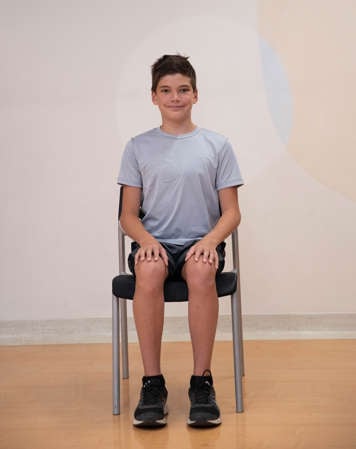
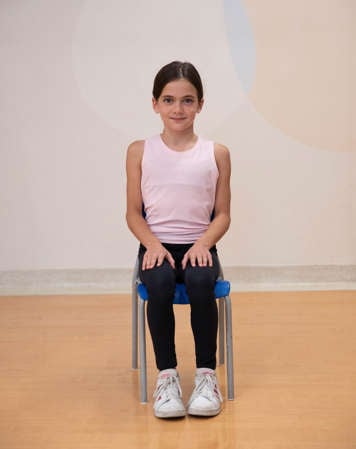
Shoulder rolls
To encourage good posture and improve shoulder movement while maintaining neck posture.
- Sit in a good posture.
- Slowly and gently roll your shoulders in circles forward and back.
- Focus on relaxing them down within pain free limits.
- Repeat 5-10 times.

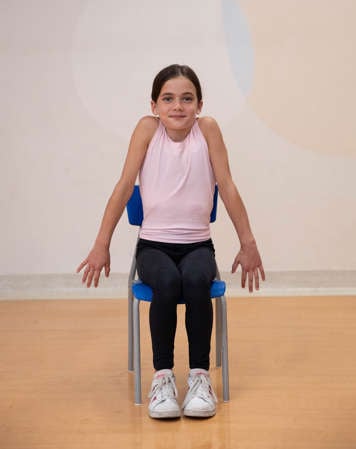
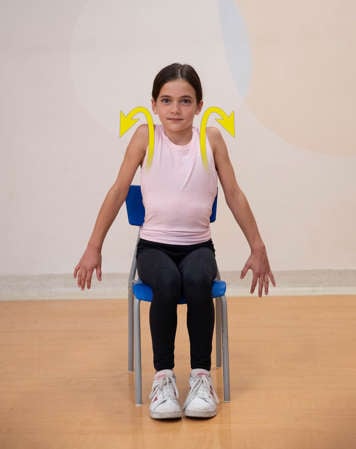

Chin tucks
To encourage good posture and prevent forward chin posture which can cause neck discomfort.
- Sit in a good posture.
- Sit up tall, drawing your shoulder blades towards the centre of your spine.
- While holding this posture, focus on bringing your chin back so your neck is long.
- Hold for 5-10 seconds to feel the stretch. Repeat 5-10 times.
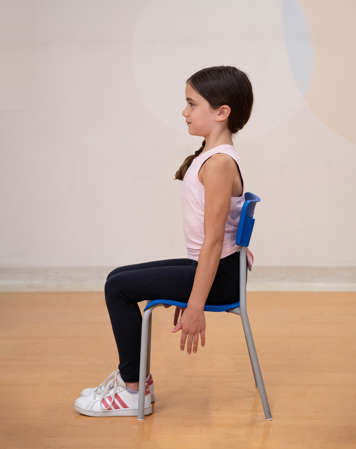

Arm lifts
To encourage good posture and improve shoulder movement. Can be done sitting down or lying on your back.
- Sit in a good posture.
- Sit up tall, drawing your shoulder blades towards the centre of your spine.
- Lift one arm so that your elbow is beside your ear and then lower your arm.
- Repeat 5-10 times and perform with both arms.

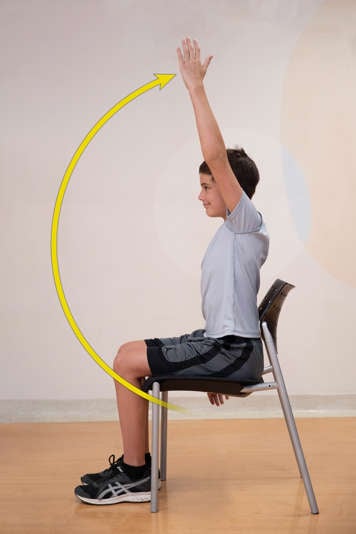
Exercise to perform 6 weeks after thoracotomy
Trunk side flexion
To improve stiffness that can happen with a side incision.
- Sit in a good posture.
- Lift the arm on the incision side straight up, like in the arm lifts exercise.
- Bend away from the incision to give it a stretch (i.e. if the incision is on the right side, bend to your left).
- Breathe, in, then breathe out and return to the starting position.
- Repeat 5-10 times.
